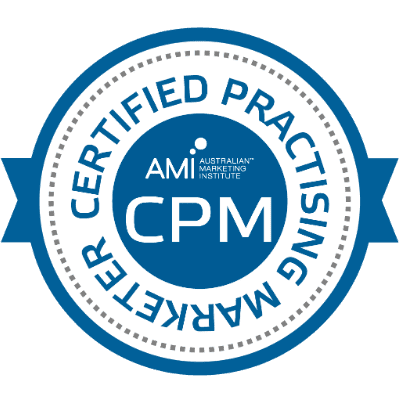SEO Marketing Strategy: 11 Components of a Successful SEO Strategy
An SEO marketing strategy is a plan for optimizing a website for search engine optimization. This involves improving the site’s content, structure, and on-page elements like titles, metatags, and anchor text. It also includes developing off-page SEO tactics like link building and social media engagement.
If you want your company to be visible online, then you need to invest in SEO marketing. Search engine optimization is the process of making your website more relevant and visible to search engines like Google. This is done through optimizing your website content, structure, and On-Page elements like title tags and Meta descriptions.
SEO marketing strategies vary depending on your business goals and budget. However, some core SEO techniques include keyword research, link building, and content creation. By investing in SEO, you can improve your chances of ranking high in search results and reaching more potential customers.
Here are some things to keep in mind when developing an SEO marketing strategy:
Research Longtail Keywords
Longtail keywords are an important part of any SEO marketing strategy. By targeting these specific keywords, you can reach a more targeted audience and stand out from the competition.
To find the right longtail keywords for your business, start by doing some research. Look at what your competitors are ranking for and see what kinds of searches are being conducted in your industry. You can also use keyword research tools like Google Adwords Keyword Planner to find additional keywords to target.
Once you’ve identified a list of potential longtail keywords, it’s time to start incorporating them into your content. As you create new content pieces (or optimize existing ones), be sure to work these keywords into the title, meta description, headlines, and body text.
Build Links to Your Website
Link building is another important part of any SEO marketing strategy. By getting other websites to link back to your site, you can improve your chances of ranking higher in search results.
There are a number of ways to build links to your website. One approach is to reach out to other website owners and ask for a link. You can also participate in online forums and post comments on other websites (with a link back to your site).
Another approach is to create link-worthy content on your website. This could include infographics, blog posts, or even videos. Once you’ve created this content, reach out to other websites and ask them to share it.
As you build links to your website, be sure to keep an eye on your link profile. Google looks at the quality of the links pointing to your site when determining where to rank you in search results. So, it’s important to focus on building high-quality links from reputable websites.
Publish High-Quality and well-research content
One of the most important things you can do to improve your SEO is to publish high-quality, well-researched content. This content should be relevant to your target keywords and provide value to your audience.
When creating content, be sure to include your target keywords where appropriate. However, don’t sacrifice quality for the sake of keyword stuffing. Instead, focus on creating informative and engaging content that will appeal to both search engines and your target audience.
In addition to regular blog posts, consider publishing long-form content like eBooks and whitepapers. These types of content can help you attract links and social shares, which can improve your SEO.
Developing a successful SEO marketing strategy requires time and effort. However, by following these tips, you can improve your chances of ranking higher in search results and reaching more potential customers.
SEO marketing is the process of making your website more relevant and visible to search engines like Google. This is done through optimizing your website content, structure, and On-Page elements like titles, meta, and anchor text. SEO marketing can also include building links to your website and creating social media content.
By following these tips, you can improve your chances of ranking higher in search results and reaching more potential customers.
Fast loading Website
A fast-loading website is at the core of your SEO strategy. Google has indicated that site speed is a ranking factor for mobile search results and that it will continue to increase its focus on site speed in the future.
There are a number of things you can do to improve your website’s load time, such as optimizing images, minifying scripts, and stylesheets, and reducing the number of requests made to the server. You can also use a content delivery network (CDN) to serve your static files from servers close to your users.
Users expect your website to load in three seconds or less, according to a poll conducted by Google. And if it doesn’t, they’ll bail.
Web users are notoriously impatient, so a slow loading page can cost you, precious visitors. speeding up your website should be a key priority if you want to improve your search engine rankings.
Here are a few tips for improving your website’s page load time:
- Optimize your images. Large image files can take forever to load, so make sure that all of the images on your site are as small as possible without compromising quality.
- Minimize HTTP requests. Every time a visitor loads a page, their browser has to make several HTTP requests to the server in order to fetch all of the resources required to display the page. This includes things like images, scripts, and stylesheets. Reducing the number of requests made can speed up your website’s loading time.
- Use a content delivery network. A CDN is a group of servers located in different parts of the world that work together to deliver content more efficiently. When a user visits your website, the CDN will serve them the static files from a server that is closest to their location, which can speed up loading times.
- Enable browser caching. When a visitor loads a page, their browser stores certain files on their computer so that they don’t have to be downloaded again the next time they visit your site. This is called caching. Enabling browser caching can help speed up your website’s loading time for repeat visitors.
- Use a faster hosting provider. Your hosting company has a big impact on your website’s speed. If you’re not happy with your current provider, consider switching to a faster one.
- Optimize your website’s code. A well-coded website will load faster than one with sloppy code. If you’re not a coder yourself, hire a professional to go through your site and clean up the code.
- Implement AMP. Accelerated Mobile Pages (AMP) is an open-source initiative from Google that allows you to create lightweight versions of your web pages specifically for mobile devices. AMP pages load faster than regular web pages, which can improve your search engine rankings and boost your website’s traffic.
SEO-Friendly URLs
One of the simplest things you can do to improve your SEO is to make sure that your URLs are friendly. A URL is the address of a web page, and it should be descriptive and easy to understand.
Here are a few tips for creating SEO-friendly URLs:
- Use keywords. Include relevant keywords in your URL so that people can easily find your page when they’re searching for those terms.
- Keep it short. A long URL can be confusing and difficult to remember. Try to keep your URLs as short and concise as possible.
- Use hyphens. Hyphens are used to separate words in a URL, and they make it easier for people to read and understand.
- Avoid special characters. Special characters, such as & and %, can make a URL difficult to read and may even cause problems when trying to access the page. Stick to letters and numbers for your URLs.
- Make it unique. There’s no need to have duplicate URLs on your website. Make sure that each page has a unique URL that is descriptive of the content on that page.
- Use lowercase letters. URLs are case-sensitive, but using all lowercase letters is generally easier to read and remember.
Sitemaps
A sitemap is an XML file that contains a list of all the pages on your website. It’s used by search engines to crawl and index your website more efficiently.
Creating a sitemap is a good way to make sure that all of the pages on your site are being indexed by search engines. It’s also helpful for people who are looking for specific pages on your site.
If you’re using WordPress, there are a few plugins that can help you create a sitemap, such as Yoast SEO and Google XML Sitemaps.
Robots.txt
Robots.txt is a text file that contains instructions for search engine crawlers. It’s used to tell crawlers which pages on your website they should index and which they should ignore.
The most common instruction in a robots.txt file is “Disallow: /”, which tells crawlers not to index any pages on your website. This is often used if there are pages on your site that you don’t want people to find, such as duplicate content or thin content.
You can also use robots.txt to tell crawlers how often they should crawl your site and which directories they should crawl.
If you’re using WordPress, there’s a plugin called Yoast SEO that allows you to easily edit your robots.txt file.
Redirects
A redirect is a way to send visitors from one URL to another. It’s often used when a page has been moved or deleted and you want to send visitors to the new page.
Redirects are important for SEO because they can help to ensure that people are able to find the pages they’re looking for. They can also help to reduce the number of 404 errors on your website.
If you’re using WordPress, there are a few plugins that can help you set up redirects, such as Redirection and Simple 301 Redirects.
SSL Certificates
An SSL certificate is a digital certificate that allows you to encrypt information sent from your website to visitors’ browsers. Encrypting this information helps to protect it from being intercepted by someone else.
SSL certificates are important for SEO because they can help to ensure that the information on your website is safe and secure. They can also help to build trust with your visitors.
If you’re using WordPress, there are a few plugins that can help you set up an SSL certificate, such as Really Simple SSL and WordPress HTTPS (SSL).
Mobile-friendly Design
More and more people are using their smartphones and other mobile devices to access the internet. This means that it’s important for your website to be designed for mobile devices.
Mobile-friendly design is important for SEO because it can help to ensure that your website is accessible to mobile users. It can also help to improve your website’s loading speed on mobile devices.
If you’re using WordPress, there are a few themes and plugins that can help you create a mobile-friendly website, such as W3 Total Cache and Jetpack.
Local SEO
Local SEO is all about optimizing your online presence to attract more business from local customers. It’s an important part of any complete digital marketing strategy.
To do local SEO effectively, you need to make sure your NAP (name, address, and phone number) is consistent across all your online listings. You also need to claim and optimize your Google My Business listing, generate positive customer reviews, and build citation signals with high-quality directory listings.
Local SEO can be a complex and time-consuming process, but it’s worth it if you want to attract more local customers. With a solid local SEO strategy in place, you’ll be able to show up in search results when people in your area are looking for products or services like the ones you offer.
That’s it! Now you know the basics of SEO and how it can help your business. If you have any questions, feel free to leave a comment below.







